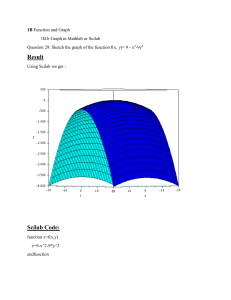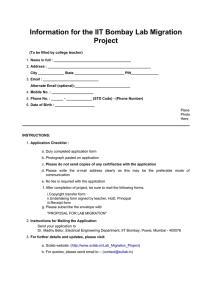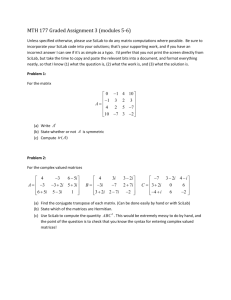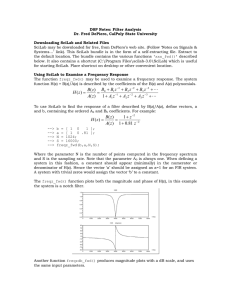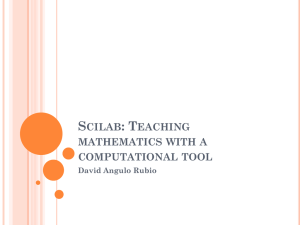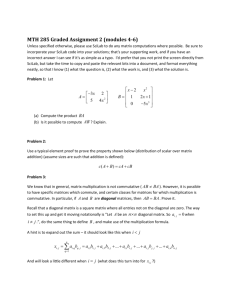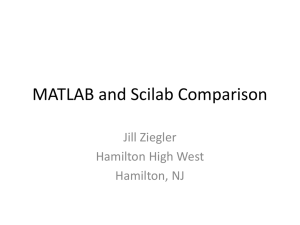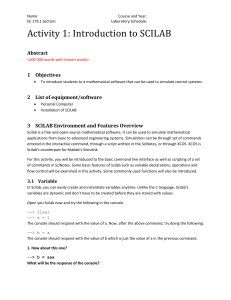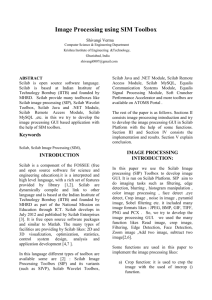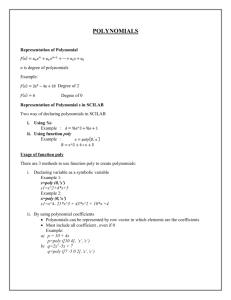Control Engineering Lab: Scilab Simulations & Analysis
advertisement
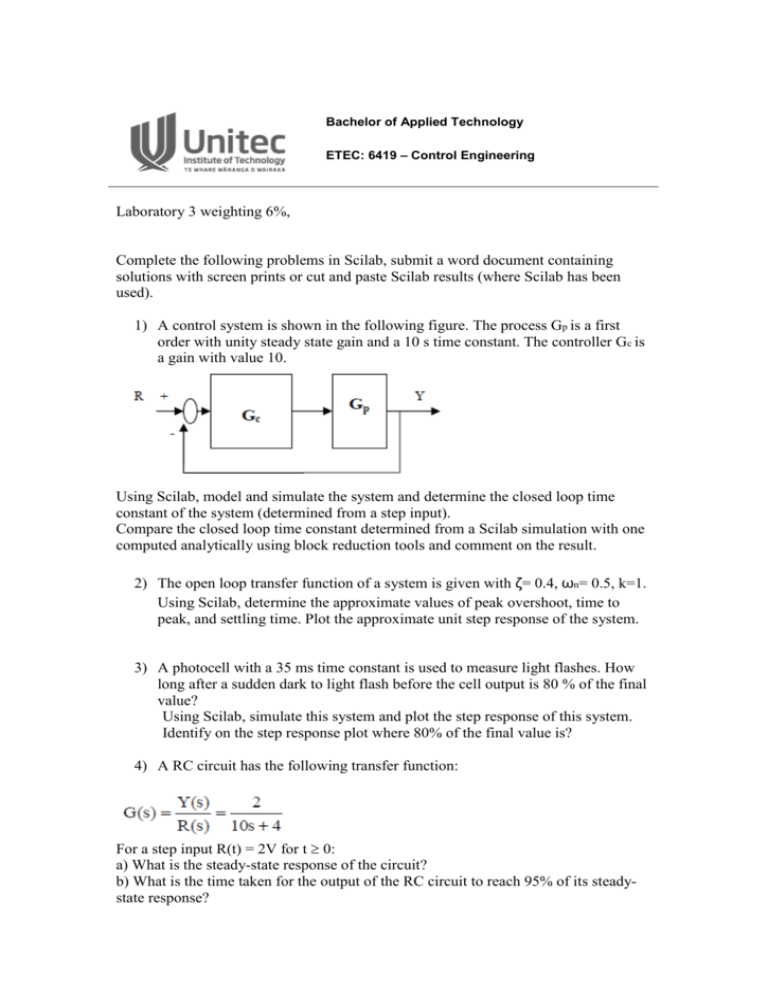
Bachelor of Applied Technology ETEC: 6419 – Control Engineering Laboratory 3 weighting 6%, Complete the following problems in Scilab, submit a word document containing solutions with screen prints or cut and paste Scilab results (where Scilab has been used). 1) A control system is shown in the following figure. The process Gp is a first order with unity steady state gain and a 10 s time constant. The controller Gc is a gain with value 10. Using Scilab, model and simulate the system and determine the closed loop time constant of the system (determined from a step input). Compare the closed loop time constant determined from a Scilab simulation with one computed analytically using block reduction tools and comment on the result. 2) The open loop transfer function of a system is given with ζ= 0.4, ωn= 0.5, k=1. Using Scilab, determine the approximate values of peak overshoot, time to peak, and settling time. Plot the approximate unit step response of the system. 3) A photocell with a 35 ms time constant is used to measure light flashes. How long after a sudden dark to light flash before the cell output is 80 % of the final value? Using Scilab, simulate this system and plot the step response of this system. Identify on the step response plot where 80% of the final value is? 4) A RC circuit has the following transfer function: For a step input R(t) = 2V for t 0: a) What is the steady-state response of the circuit? b) What is the time taken for the output of the RC circuit to reach 95% of its steadystate response? c) Check your result with a Scilab simulation of the system. 5) Consider the first-order system, Obtain the unit-step response curves for T = 0.1, 0.5, 1.0, 5.0 and 10.0 respectively, with Scilab. 6) Consider the first-order system, Obtain the unit-step response curves for k = 0.1, 0.5, 1.0, 5.0, and 10.0 respectively, with Scilab. 7) A second-order system is described by the differential equation: a) Write down the transfer function Y(s)/U(s) of the system, where U(s) and Y(s) are the Laplace transforms of u(t) and y(t), respectively. b) Obtain the damping ratio and the natural frequency n of the system. c) Calculate the rise time and percent overshoot of the system. d) Evaluate y(t) for a unit-step input u(t). e) Check your answers of the above with Scilab. 8) Consider the second-order system Obtain the unit-impulse response curves for = 0.1, 0.3, 0.5, 0.7, 1.0, and 4.0 respectively, with Scilab. 9) Consider the second-order system Assuming that n = 2, k = 2, obtain the unit-impulse response curves for = 0.1, 0.3, 0.5, 0.7, 1.0, and 4.0 respectively, with Scilab.
